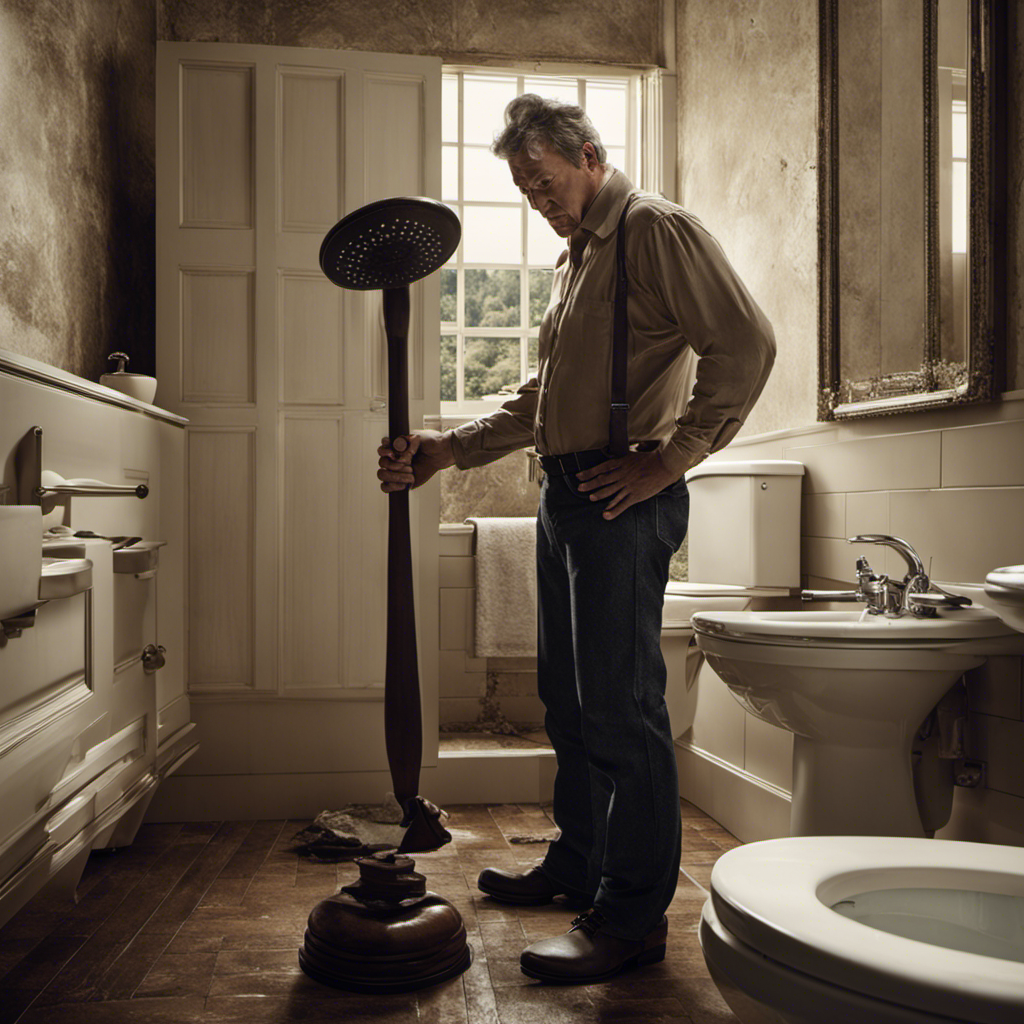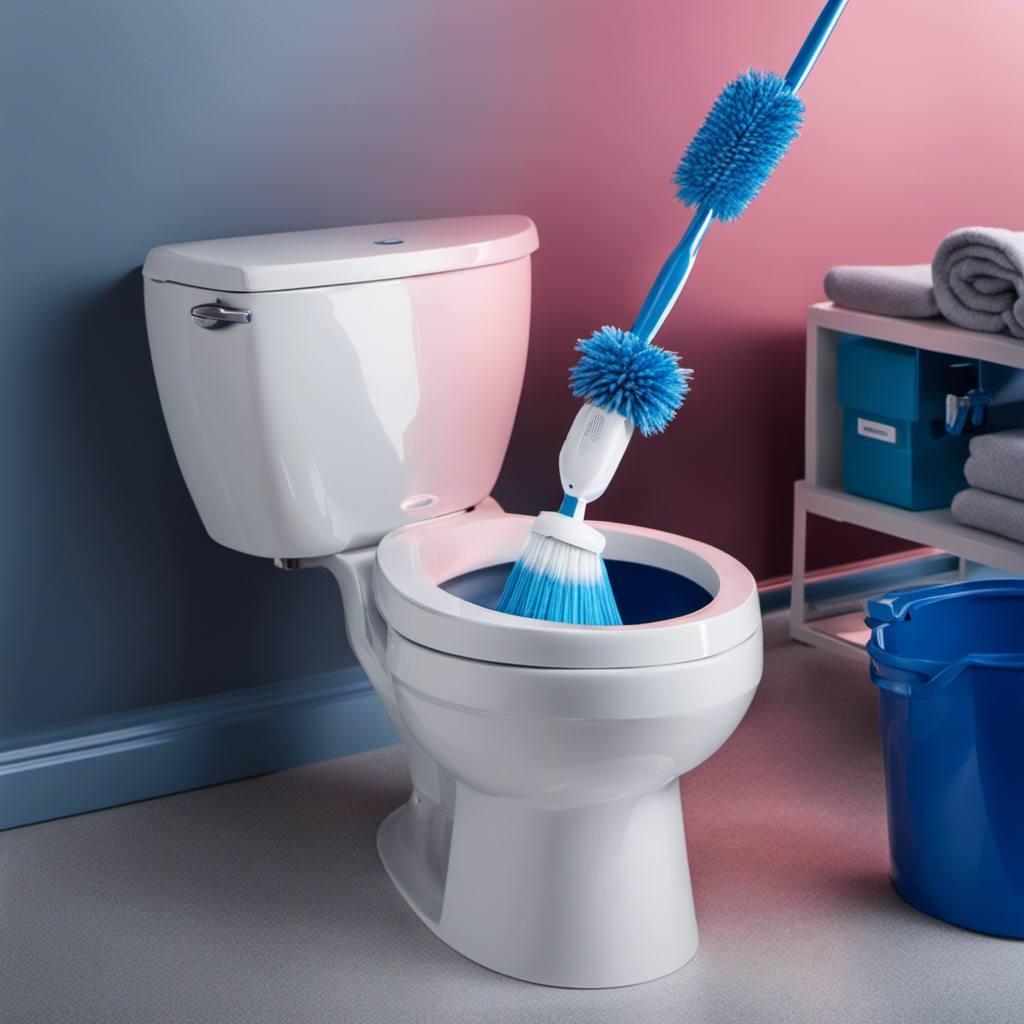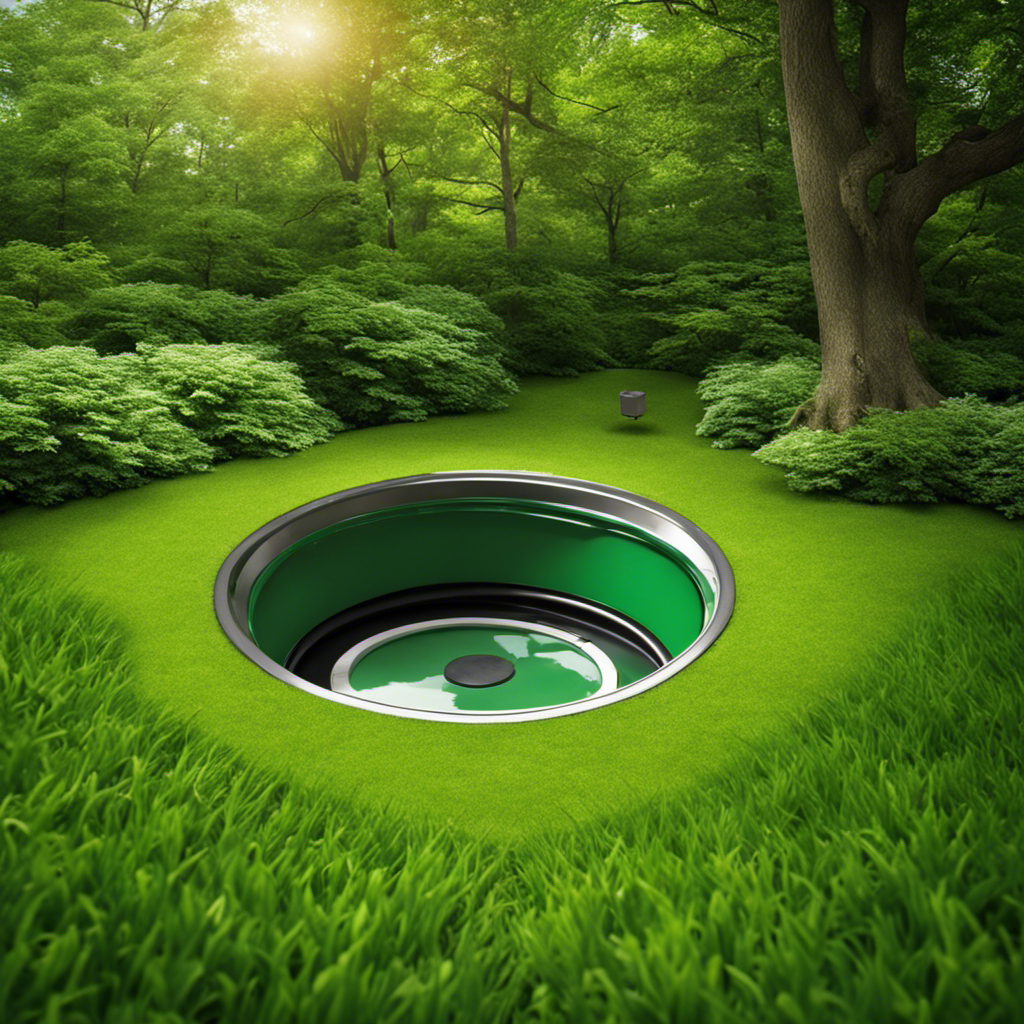I’ve been there before – standing in front of a clogged toilet, unsure of what to do next. It’s a frustrating situation that can leave you feeling overwhelmed. But fear not, because in this article, I’m going to share with you some practical tips and techniques for dealing with a clogged toilet.
From identifying the causes and signs of a clog, to using basic tools and DIY methods, we’ll cover all the bases. So let’s dive in and get your toilet back in working order!
Key Takeaways
- Flushing non-flushable items and overloading the toilet with excessive waste can cause clogs.
- Gurgling sounds coming from the bathroom may indicate a clogged toilet.
- Use eco-friendly alternatives like a plunger, toilet auger, or a mixture of hot water and dish soap to unclog a toilet.
- If DIY methods fail or if persistent plumbing issues occur, it is advisable to call a professional plumber.
Causes of a Clogged Toilet
You might be wondering what causes your toilet to get clogged. Well, there are a few common misconceptions when it comes to this issue.
Firstly, many people believe that flushing anything down the toilet is perfectly fine. However, this is not the case. Items like paper towels, feminine hygiene products, and even excessive amounts of toilet paper can easily cause a clog.
Another misconception is that toilets can handle any amount of waste. This is not true either. Overloading the toilet with a large amount of waste can lead to clogs.
To prevent these issues, it is important to follow some prevention measures. These include only flushing toilet paper and waste, avoiding flushing anything else, and using a plunger at the first sign of a clog.
Signs of a Clogged Toilet
If there are gurgling sounds coming from your bathroom, it’s a sign that something may be blocking the pipes. This could indicate a clogged toilet, which is a common plumbing issue many homeowners face. To prevent toilet clogs, it’s important to debunk some common misconceptions. Here is a table that highlights these misconceptions and the correct practices for toilet clog prevention:
| Misconception | Correct Practice |
|---|---|
| Flushing anything and | Only flush toilet paper and |
| everything down the toilet | human waste |
| Using excessive amounts | Use a moderate amount of toilet paper |
| of toilet paper | and flush multiple times if needed |
| Believing that all toilet | Use a plunger or call a professional |
| clogs can be fixed with a | plumber if the clog persists |
| plunger |
Basic Tools for Unclogging a Toilet
When unclogging a toilet, it’s important to have basic tools on hand.
Many people make common mistakes when attempting to unclog a toilet, such as using harsh chemicals or improper techniques. It is essential to avoid these mistakes to prevent further damage to the toilet or plumbing system.
Instead, consider eco-friendly alternatives for unclogging a toilet.
One option is using a plunger, which can create suction and dislodge the clog.
Another eco-friendly alternative is using a toilet auger, which is a long, flexible tool that can reach deep into the pipes to remove the blockage.
Additionally, you can try using a mixture of hot water and dish soap to break down the clog.
DIY Methods for Unclogging a Toilet
To effectively unclog a toilet, start by using a plunger or a toilet auger as eco-friendly alternatives.
A toilet plunger is a basic tool that can create a strong suction to dislodge the blockage. Make sure to cover the entire drain opening with the plunger and push and pull vigorously to create pressure.
If the plunger doesn’t work, you can try using a homemade drain cleaner. Mix equal parts of baking soda and vinegar, and pour it into the toilet bowl. Let it sit for a few minutes, then flush with hot water. The combination of baking soda and vinegar can help break down the clog and clear the drain.
Remember to always use caution when unclogging a toilet and consider calling a professional if the problem persists.
When to Call a Professional Plumber
If you’re experiencing persistent issues with your plumbing, it may be time to reach out to a professional plumber. While there are DIY methods for unclogging a toilet, sometimes the problem can be more complex and require the expertise of a professional. Attempting to fix the issue yourself can lead to common mistakes such as using harsh chemical cleaners or improper use of tools, which can further damage your plumbing system. To prevent future toilet clogs, it’s essential to be mindful of what you flush down the toilet. Avoid flushing items like sanitary products, wet wipes, or excessive amounts of toilet paper. Additionally, regular maintenance, such as using a plunger and periodically checking for any plumbing issues, can help prevent future clogs.
| Common Mistakes to Avoid | How to Prevent Future Toilet Clogs |
|---|---|
| Using harsh chemicals | Be mindful of what you flush |
| Improper use of tools | Avoid flushing non-flushable items |
| Ignoring plumbing issues | Regular maintenance |
Conclusion
In conclusion, dealing with a clogged toilet can be a frustrating situation, but with the right tools and techniques, it can be resolved quickly and efficiently.
By identifying the signs of a clogged toilet and using basic tools such as a plunger or a toilet auger, you can often unclog the toilet yourself.
However, if DIY methods don’t work, don’t hesitate to call a professional plumber for assistance.
Remember, prevention is key, so be mindful of what you flush down the toilet to avoid future clogs.










